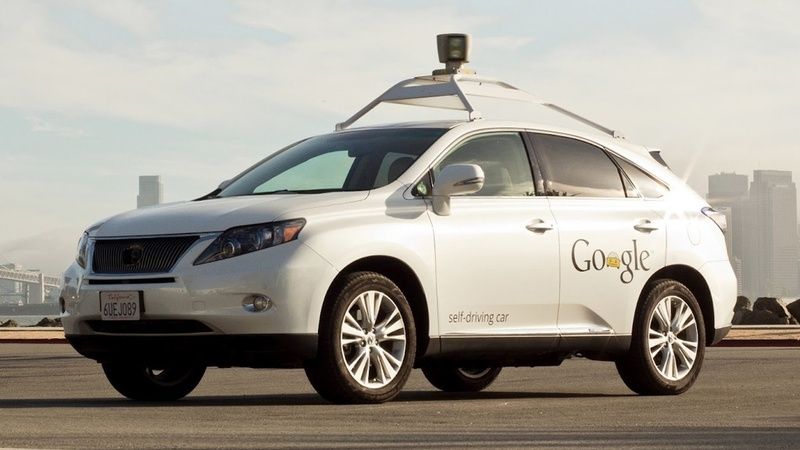The smart cars are spreading. After several years of testing its autonomous vehicle technology around California’s Bay Area, Google recently confirmed that it was taking its self-driving vehicles to Austin, Texas.
According to Jennifer Haroon, head of business operations for Google’s self-driving car project, at least two of the company’s white 2015 Lexus RX 450h SUVs->ke145 will be used in the Lone Star State, one of which has already been on the street for the last week or so. The second car will be deployed sometime this week. The cars are outfitted with Google’s array of sensors and autonomous software.
The cars will mostly test around the north/north-east quadrant of downtown Austin, and for now, will not venture onto the highway. This will be the first time Google’s autonomous cars have been tested outside California.
Google hopes the change in scenery will provide a new environment for its autonomous software to sort through, including differences in geography, as well as a variation in the behavior of drivers, pedestrians, and bicyclists. “We really won’t know until we’ve started testing more,” Haroon said.
Last month, reports emerged that Google’s SUVs were spotted in Austin before any announcement from either company or government officials. Google says the cars were being driven by employees in order to map the area prior to autonomous testing.
“It makes the task of self-driving easier on the car so that the car can really focus on what’s novel and new in the environment,” said company spokeswoman Courtney Hohne.
Public officials are embracing the tests as a means towards safer and more reliable transportation with a lower rate of congestion.
Continue reading for the full story.
Why it matters
Prior to this announcement, the sudden appearance of Google’s fully autonomous vehicles in Austin left some Texans wondering what the tech behemoth was up to and whether or not such actions were even legal.
California, Michigan, and four other states have already implemented laws concerning the operation and testing of fully autonomous vehicles, whereas Texas has not. While several pieces of legislation have been filed, nothing has actually passed. For example, earlier this year, Senator Rodney Ellis (D-Houston) sponsored a bill that would have created an autonomous vehicle pilot program while setting a minimum level of government oversight. Google (and the Auto Alliance, a trade group for automakers) opposed the bill, citing concerns over stagnated innovation. “We’re still learning how the technology might be used,” Haroon said.
Nonetheless, it’s reported that Google approached state and city officials with its intentions to bring the tech to Austin’s streets prior to the actual tests. Back in 2013, Google brought a prototype self-driving car to a transportation conference in Texas, handing out rides to local and state officials.
So why Austin? In addition to embracing the latest tech trends and housing a few Google offices, Austin is also one of the premiere locations of Google Fiber, the company’s high-speed Internet project. "We've loved how much Austin embraces innovation," a Google spokesperson told the Austin American-Statesman.
So far, Google says its fleet of roughly two-dozen autonomous vehicles has logged over a million self-driving miles without major incident since the program began in 2009 (some experts point to 11 accidents involving the cars, but Google claims each was the result of human error rather than the tech). Meanwhile, the software has developed to manage hundreds of different activities around the vehicle.
Throughout testing, two human drivers will be present in the car to see how the car is “behaving,” as well as provide feedback to engineers and take the controls if needed.
Which brings me to one of the weirdest things about these developments: the language used. Google keeps using anthropomorphic words like how the software is “behaving,” or that it needs to “focus” on certain tasks, or “learn” about its environment. This speaks to the highly sophisticated nature of this technology and just how advanced it needs to be in order to navigate the ever-changing landscape of public roads.
But it also predicts how Google and other interests will sell this technology to the public. I could see fully autonomous vehicles framed as something like your own personal robot helper, there when you need it and happy to assist you with whatever capabilities it has.
This is an interesting development, and clearly, the proliferation of this tech is just around the corner. So far, things are looking good – no major incidents have been reported, and both the public and government seem hungry to introduce it into the mainstream.
But there are still lots of questions left unanswered. There are liability concerns over insurance claims, security concerns over the “hackability” of these systems, and ethical concerns over situations like the so-called “Trolley Scenario” (there are many variations of this, but the general idea plays out as such: A runaway trolley barrels towards an autonomous car, forcing the software to decide between either hitting the trolley and killing the passengers or running onto the sidewalk and killing pedestrians).
I doubt any of these questions will be answered anytime soon, and like just about every other transformative tech, folks will rush to embrace the benefits and only confront the hard stuff when forced too.
Personally, I’m all for fully autonomous vehicles. I agree that it has a lot to offer in terms of safety, efficiency and convenience. It’s just a matter of making it commonplace that I think could get messy. What happens when driverless cars mix with human pilots in a big way? By all accounts, it looks like Google is well on its way to finding out.
2015 Lexus RX450h
Read our full review here.

